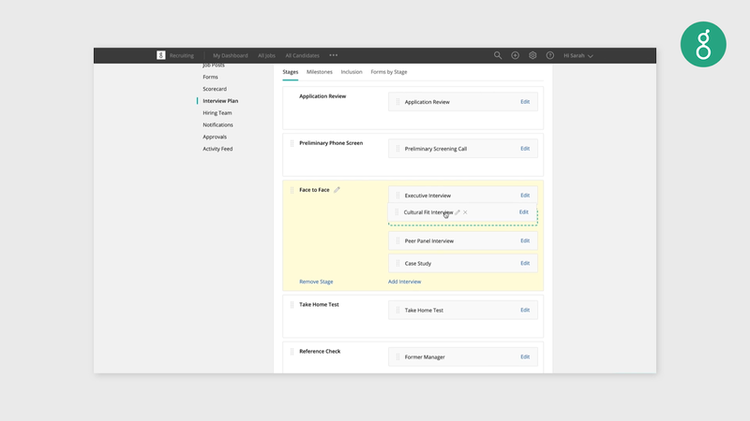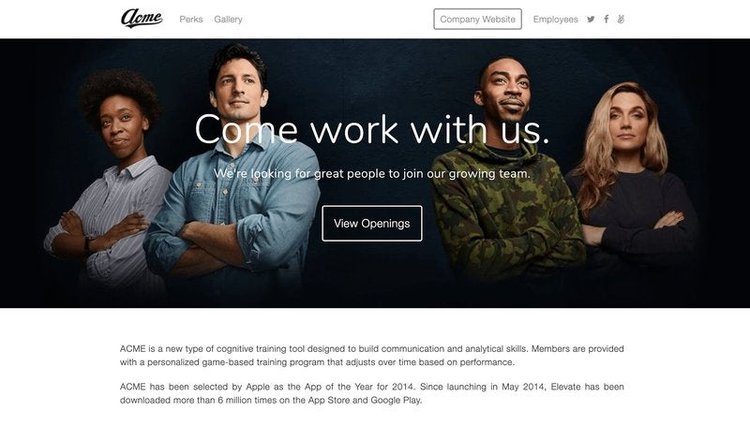Hiring new employees is one of the most difficult tasks facing HR professionals and recruiting. Competition for the most talented applicants is fierce, and it’s difficult to initially attract these candidates, let alone getting them to apply and stay in the recruitment process right up until the final step.
Recruiting is a blend of art and science that requires a lot of different skills. You need to be adept at handling data, but you also need the communication skills (both online and in person) to engage your candidates.
While there isn’t one right way to hire employees, from our experience there are general rules to effectively recruiting. Here are the best hiring practices to help you attract and recruit the most talented candidates.
1. Create a strategy before you start the process
Before you start hiring, you need a strategy. To create this strategy, first review past data you have from recruiting for similar roles. Review those data to find out what worked and what you should avoid. This process should cover such aspects as:
- Recruiting channels to use
- Pipeline stages
- Application form
- Hiring team
After reviewing the data, hold a meeting for all members of the hiring team so you can get their input on whom to look for, where to look for them, and how to post job ads that attract top talent.
Remember to build in some flexibility in case things don’t go according to plan. If you don’t get any applicants with the right skills, then you will need to branch out into new channels or try new recruiting ideas.
If you get a couple of great applicants who don’t quite meet the requirements, then you might need to adjust your pipeline stages.
2. Define the role but leave some flexibility
While it’s important to get clear on what you’re looking for and what skills a candidate needs to have, don’t be too rigid when it comes to a potential applicant’s profile.
For example, if you’re looking for a social media marketer, you could consider a content marketing rockstar who has the writing skills to create social posts and can quickly learn other aspects of the role such as scheduling and reporting.
Also consider whether a candidate would be a good fit for your company. Even the most talented employee will struggle in an environment that doesn’t suit their personality or work style, and you want to make sure you can get the most out of any new hire.
Create a list of must-have skills that you need to move the business forward and help you meet your staffing needs, but remember to think outside the box when it comes to all other aspects.
3. Customize your pipeline stages
This is no one-size-fits-all recruiting process. That’s why hiring best practice tips often fall flat -- they aren’t right for your company.
For example, effective hiring practices normally involve automatically disregarding certain resumes if they don’t meet certain criteria. But that can rule out a lot of potential candidates, which puts you in a difficult position if you’re recruiting for a notoriously hard-to-fill position.
Or, if you’re hiring for an executive position, you might want to comb through all the resumes one by one (assuming you don’t have a ton of applicants).
Each position in each department is different and requires a different approach. You can create templates for these positions and save them for use the next time around, although if your recruiting process was suboptimal, you may want to make changes.
The Greenhouse applicant tracking software lets you create recruitment plans before you even start the process, specifying pipeline stages and what each involves, milestones, who will be included at each stage, and necessary documents.

With Greenhouse’s applicant tracking software, hiring managers are able to create a recruitment plan before they start the hiring process. Image source: Author
4. Always be recruiting
Even if you don’t have any open roles, you still need to be creating a talent database so you can quickly tap into the best candidates when you need them.
There are a number of ways you can do this. Make sure your social media accounts are active and provide insight into what it’s like to work at your company. This will help you turn passive candidates into brand fans who want to work there.
Use your social media accounts to engage with potential applicants by answering questions and commenting on their posts. Monitor who likes and engages with your posts and add them to your talent database.
Make sure you have set up a careers portal that encourages speculative applications even when there isn’t a relevant job opening. Also, be open to training existing employees through your internal recruiting process.
With Breezy HR, you can use one of their customizable templates or create your own careers page. Aside from the basic information about your company, there are sections to add perks and testimonials, as well as upload photos.
To further build up your database of applicants, you can use Breezy HR’s talent search functionality. This lets you search for candidates based on:
- Job title
- Location
- School they attended
- Skills
- Background

Breezy HR helps you attract passive candidates with a customizable careers portal. Image source: Author
5. Focus on the candidate experience
If you want to attract the most talented candidates and portray a good image of your company, you need to make sure your candidate experience is up to scratch.
This spans every area of the hiring process -- from creating a job ad to talent sourcing, to phone screening questions to interviewing candidates, and to carrying out background checks and onboarding.
Make sure you keep candidates up to date with the latest developments in the process. If you’ve decided to put the job on hold, drop them a quick and personalized note. If you want to put them through to the next stage, let them know as speedily as you can.
Don’t make candidates jump through unnecessary hoops such as multiple interviews with the same people, and don’t ghost them even if you decide they aren’t right for your company.
Not only will these missteps create a bad image of your company, but it’s also likely that you’ll find it hard to recruit talented candidates in the future if word gets around about how poorly you treat them.
ApplicantPro can help you create a winning candidate experience and set a high hiring standard that other companies have to work hard to meet.
The applicant tracking system lets you directly communicate with candidates from the applicant dashboard by sending messages as either SMS or email, depending on the candidate’s preferences.
It also automates steps within the candidate pipeline, such as rejecting candidates. You can send out multiple rejection letters for different pipeline stages at the same time by quickly selecting the relevant option.
You can also set up the system so that it automatically sends out rejection emails or text messages when you change the candidate to a particular status. This ensures that candidates are always fully informed about where they stand.
ApplicantPro lets you customize pipeline stages and the status of applications. Image source: Author
Onboarding as part of recruiting
While you might think that the hiring process finishes as soon as an employee accepts the job and signs an offer letter, that’s not the case. They can still drop out at any point until their first day. That’s why you need to view onboarding as part of recruiting.
Make sure you have a smooth and streamlined onboarding process in place so you don’t scare candidates away at the final step. Connect onboarding to your recruitment process so you don’t have to enter data twice, and make sure both you and the candidate can carry out all actions online.
That way your new hire can look forward to their first day rather than wondering if they made the wrong decision.
Our Small Business Expert
We're firm believers in the Golden Rule, which is why editorial opinions are ours alone and have not been previously reviewed, approved, or endorsed by included advertisers. The Ascent does not cover all offers on the market. Editorial content from The Ascent is separate from The Motley Fool editorial content and is created by a different analyst team.